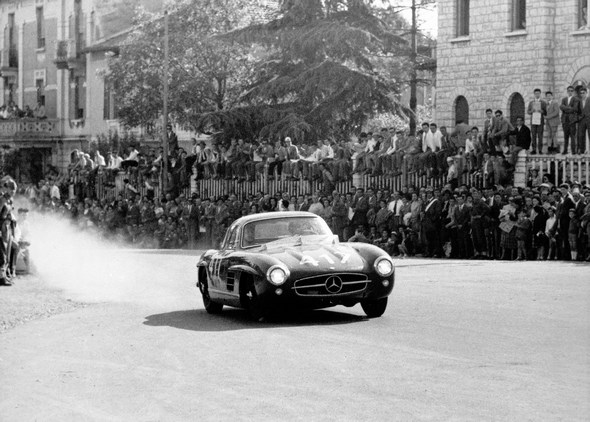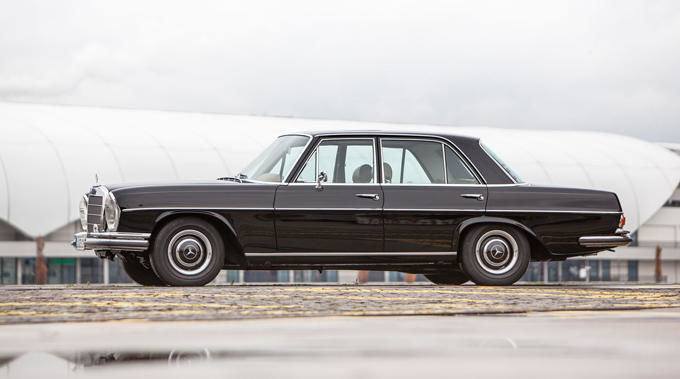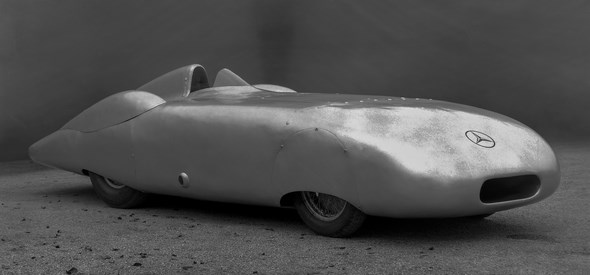Mercedes-Benz 300 SL: 60 years ago, a double victory at the “24 Hours of Le Mans”


- Hermann Lang and Fritz Riess won the legendary 24-Hours of Le Mans race at the wheel of a 300 SL (W 194 series) on 14/15 June 1952
- Theo Helfrich and Helmut Niedermayr were second, also piloting a 300 SL (W 194)
Stuttgart – Mercedes-Benz achieved a magnificent success in 1952: a double victory at the “24 Hours of Le Mans”. This placed the 300 SL racing car (W 194 series) firmly in the limelight.
Because the then novel vehicle was specifically developed for the 1952 racing season, and over the months it showed its supremacy in all the most renowned racing events around the world, impressively signalling Mercedes-Benz’s return to international motor racing.
By then, Mercedes-Benz had won almost all the world-famed races; only the 24-hour race in Le Mans, France, remained – and this competition was predestined for the 300 SL. A considerable stir having been caused at their presentation on March 12, 1952, a total of ten of these racing cars were built for the 1952 racing season.

Preparations for participation in the long-distance classic got under way already a year beforehand. At Le Mans the car’s brakes are subjected to particularly high stresses, especially in the 4-km long straight stretch between the Tertre-Rouge and the Mulsanne curves, where drivers have to slow down from top speed to just about 50 km/h, lap after lap.
The remarkably original idea of using a retractable aluminium aileron to act as an airbrake was dismissed, though.
Another tricky point was the question of access to the vehicle, even though the rules and regulations said nothing against the small doors or access hatches the 300 SL originally had.

The sports marshal of the Automobilclub de l’Ouest, Monsieur Acat, presented a little sketch suggesting that the entry hatch be extended downwards – and so, the gullwing was born as a goodwill gesture towards the organiser and in order to take the wind out of the sails of any potential protests right from the outset.
The cars of the different teams bore different coloured bands around the radiator to help distinguish them in the race. The car with chassis number 0009 and starting number 20 (Theo Helfrich/HelmutNiedermayr) sported a red strip, car number 0007 with starting number 21 (Hermann Lang/Fritz Rieß) a blue one, while number 0008 with starting number 22 (Karl Kling/Hans Klenk team) was distinguished by a green band.
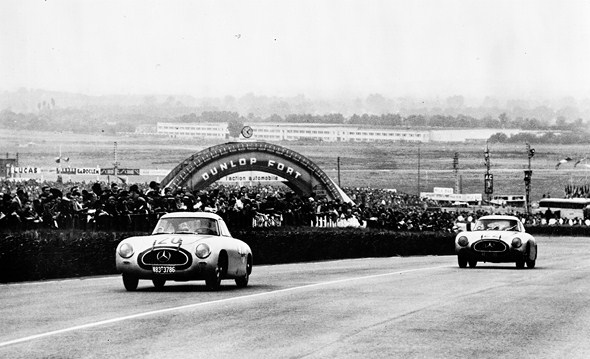
After the start Ferrari and Jaguar took the lead, André Simon and Alberto Ascari setting lap records in turn. Too much of a good thing, however: two hours into the race, the clutch of Ascari’s Ferrari 250 S gave up. Simon with the Ferrari 340 “America”, now led in front of the Robert Manzon/Jean Behra team with their 2.3-litre Gordini.
Towards evening the two Frenchmen moved up into the leading position. Meanwhile, an alternator malfunction made itself felt on board the Kling/Klenk team’s 300 SL, forcing Kling to make a 10-minute pit stop; an hour later another 17-minute delay in the pits was called for.
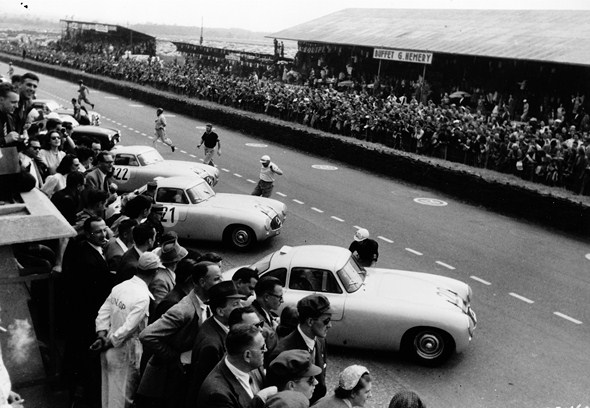
Finally, at half-past midnight Hans Klenk took off his helmet, his expression showing resignation and utter disappointment. And the little lightweight 2.3-litre Gordini was still leading. After a pit stop Pierre Levegh, with his 4.5-litre Talbot took over the first place, followed at a distance of 65 kilometres by the 300 SLs of the Helfrich/Niedermayr and Lang/Riess teams.
By noon of the following day the number of contestants had shrunk to 19 vehicles. Levegh was still at the forefront, but stubbornly refused to allow his co-pilot Marchand to relieve him. Behind him the two 300 SLs thundered on reliably, lap after lap. Then, just 70 minutes before the end of the race, a damaged connecting rod forced Levegh to abandon between Arnage and Maison Blanche.
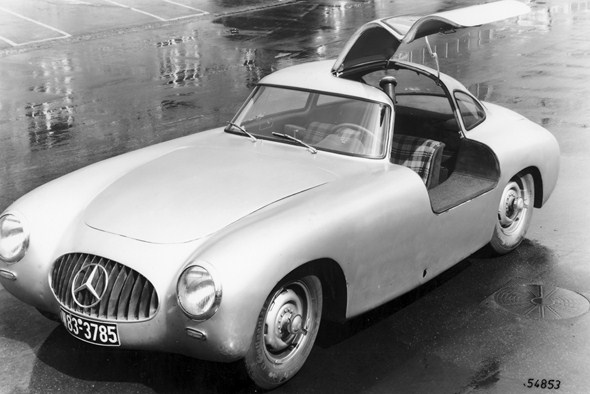
The two 300 SLs were now unreachably far ahead. In the early hours of the morning the new front runner Theo Helfrich lost his leading position to Hermann Lang due to a driving error. Mercedes-Benz won the 24 Hours of Le Mans.
For Hermann Lang and Fritz Riess, to whom this success was largely due, it was the most important triumph of their careers. They were followed by the Helfrich/Niedermayr team who came in second in one of the other 300 SLs.
The double victory at Le Mans was preceded by a triple win in Bern on 18 Mai 1952. Further successes followed in that racing season: a fourfold victory at the Great Jubilee Prize at Nürburgring on 3 August 1952 and another double win in the 3rd Carrera Panamericana in Mexico (19 to 23 November 1952), the last great event of the extremely successful 1952 racing season.



